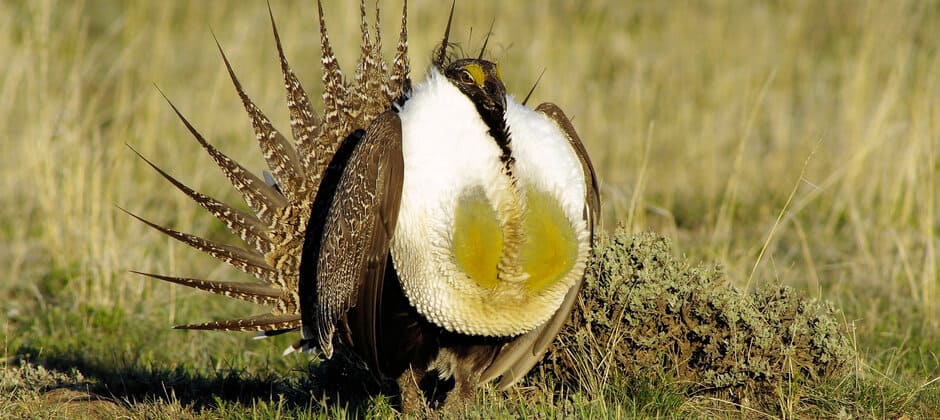Share this article
Lawsuit challenges decision not to list bi-state sage-grouse
Advocacy groups filed a lawsuit in late September challenging the U.S. Fish and Wildlife Service’s decision not to list the bi-state population of greater sage-grouse (Centrocercus urophasianus) under the Endangered Species Act.
The lawsuit, filed by the Western Watersheds Project, WildEarth Guardians and the Center for Biological Diversity, is the latest in a series of legal challenges regarding conservation of the distinct population of the species found along the California-Nevada border.
The first petition to list this population of sage-grouse came in 2001, followed by another petition in 2005. The USFWS rejected each of those petitions, because they did not present sufficient scientific information to support listing, sparking lawsuits from the petitioners. In response to court mandates, in 2010, the agency determined that listing the population as a threatened or endangered species was warranted but was precluded by higher priority listing actions for other species.
In 2013, the agency proposed listing the grouse as threatened, citing decreasing population numbers and habitat fragmentation. In 2015, the agency pulled back from this proposal, announcing that listing was no longer warranted given the success of cooperative conservation measures.
Conservation groups then brought about a lawsuit in 2016 challenging the decision, with a court ruling in their favor two years later and requiring the agency to take another look at listing. The USFWS in April 2019 reopened the 2013 comment period on the listing proposal. It also announced the initiation of a new status review for the bi-state sage-grouse to determine whether it met the definition of an endangered or threatened species under the ESA. In March 2020, the agency withdrew the listing proposal, determining, once again, that listing was not warranted in light of current and planned conservation efforts, prompting the current lawsuit.
The plaintiffs argue that bi-state sage-grouse populations continues to decline, despite ongoing conservation measures. They allege that the USFWS failed to adhere to the best available science in once again deciding not to list the population.
According to estimates from the USFWS, fewer than 3,500 grouse range across 7,000 square miles of mostly high desert sagebrush from Carson City, Nev., to Yosemite National Park in California. The bird’s numbers have dropped by half over the last 150 years, with their occupied habitat decreasing by over 200 square miles in the past 11 years.
Read TWS’ statement on the 2015 decision not to list greater sage-grouse
Header Image: A recent lawsuit challenges the U.S. Fish and Wildlife Service’s decision not to list the bi-state population of sage-grouse as endangered. Credit: USFWS Mountain and Prairie Region








